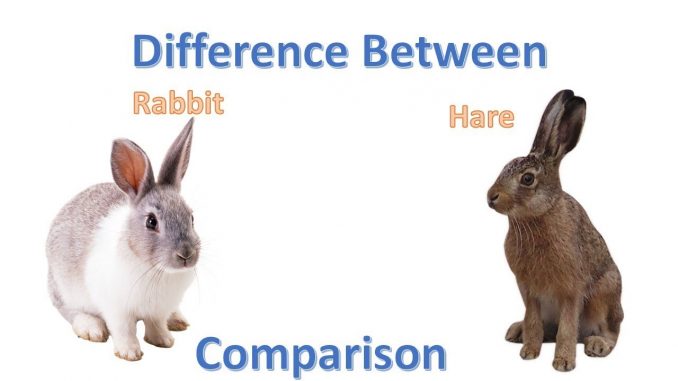| S.N. |
Hare (Lepus) |
Rabbit (Oryctolagus) |
| 1. |
It is a normad, staying temporarily at some sheltered spot behind a stone or under a bush. |
It is a fossorial animal, living in a permanent home, which is a burrow of its own excavation in the ground. |
| 2. |
The pinna is longer and has a black tip |
The pinna is comparatively short and is without a black tip. |
| 3. |
The hind limbs are longer. |
The hind limbs are shorter. |
| 4. |
In the fore limbs, the radius is longer than the humerus and the claws are not so strong as in rabbit. |
In the fore limbs, the radius is shorter than the humerus and the claws are very stout for digging. |
| 5. |
It is solitary in nature. |
It is gregarious in nature. |
| 6. |
The young ones at birth are quite strong, have fur and have open eyes. |
The young ones at birth are weak, without fur and are blind. |
| 7. |
It is a good runner and can keep up a great speed for a long distance. |
It is a good runner, but can run swiftly only for a short distance. For this reason, it never ventures far from its burrow. |
| 8. |
The danger signal is a sound produced by grinding the incisors against each other. |
The danger signal is a sound produced by thumping the ground with the hind limbs. |
| 9. |
There is no groove on the incisors of the upper jaw. |
The incisors or the upper jaw are marked by a vertical groove on the outer surface. |
| 10. |
It doesn’t thrive in captivity. |
It forms a good domestic pet. |
| 11. |
It usually feeds at night, i.e. nocturnal. |
It usually feeds at dusk and dawn, i.e. crepuscular |
| 12. |
 |

|

